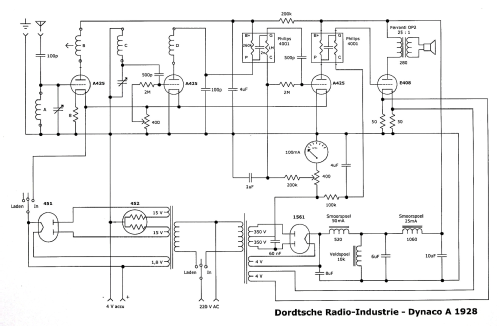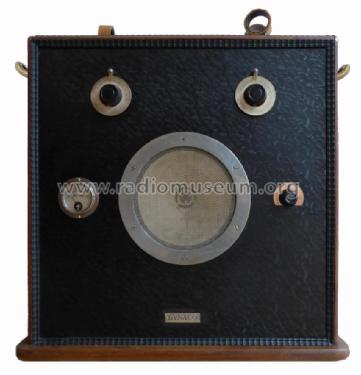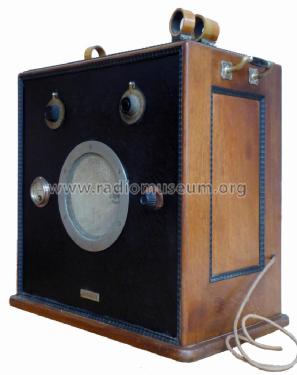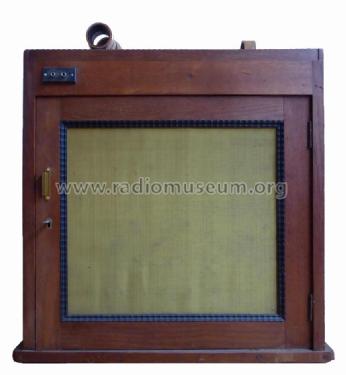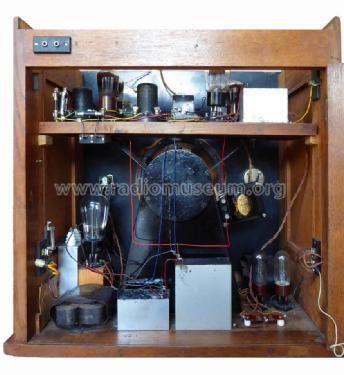- Land
- Niederlande
- Hersteller / Marke
- Dynaco, Dordtsche Radio Ind., Dordrecht
- Jahr
- 1928
- Kategorie
- Rundfunkempfänger (Radio - oder Tuner nach WW2)
- Radiomuseum.org ID
- 69395
Klicken Sie auf den Schaltplanausschnitt, um diesen kostenlos als Dokument anzufordern.
- Anzahl Röhren
- 4
- Hauptprinzip
- Geradeaus oder Audion mit Rückkopplung; 2 NF-Stufe(n)
- Anzahl Kreise
- 2 Kreis(e) AM
- Wellenbereiche
- Langwelle, Mittelwelle (LW+MW).
- Betriebsart / Volt
- Netz / Akkus (evtl. plus Batterie) / 220 & 4 Volt
- Lautsprecher
- Dynamischer LS, mit Erregerspule (elektrodynamisch) / Ø 20 cm = 7.9 inch
- Belastbarkeit / Leistung
- 3 W (Qualität unbekannt)
- Material
- Gerät mit Holzgehäuse
- von Radiomuseum.org
- Modell: A - Dynaco, Dordtsche Radio Ind.,
- Form
- Tischgerät, Truhenform, meist mit Deckel (NICHT Schrägpult).
- Abmessungen (BHT)
- 580 x 560 x 345 mm / 22.8 x 22 x 13.6 inch
- Bemerkung
-
Dynaco model A is an AC TRF receiver with accumulator for the filament of the radio tubes.
In Slavonic oak cabinet with black front, black decorative edges and a hinged door at the rear. Four coils can be inserted at the top of the receiver. The feedback is set by means of a movable coil. At the top of the front are the tuning knobs for primary and secondary tuning, the electrodynamic loudspeaker is in the middle with on the left a milliamp meter that shows the anode current of the power tube. A switch with the positions "on", "off" and "load" is located to the right of the loudspeaker. At the rear is a gramophone connection. Because of the very high weight (over 47 kg), carrying handles are provided on the sides of the cabinet.
The radio was intended for larger spaces, such as cafes, restaurants or dance halls. The radio has a built-in battery charger, which can be used to charge the 4-volt accumulator for the filament current of the three radio tubes when the radio is not in use. The built-in power supply unit provides the plate and filament voltages for the rectifier and the power tube. Both the radio and the electrodynamic loudspeaker were designed by drs M. Hellingman, teacher at M.T.S Technical School in Dordrecht. The radio receives medium wave and long wave, depending on the coils used. The receiver was introduced on August 20, 1928, when the first advertisements appeared and the radio was demonstrated in the auditorium at Groenmarkt 50, Dordrecht. A month later it was demonstrated in the coffee room of the Dordrecht flower exhibition.
- Nettogewicht
- 47 kg / 103 lb 8.4 oz (103.524 lb)
- Originalpreis
- 650.00 Hfl
- Datenherkunft extern
- Radio Amateur Museum / Frans J.J. Driesens + ISBN 90-76014-04-3.
- Datenherkunft
- Opkomst van de Nederlandse Radio-Industrie
- Literaturnachweis
- Radio-Expres, Netherlands
- Weitere Modelle
-
Hier finden Sie 2 Modelle, davon 2 mit Bildern und 1 mit Schaltbildern.
Alle gelisteten Radios usw. von Dynaco, Dordtsche Radio Ind., Dordrecht
